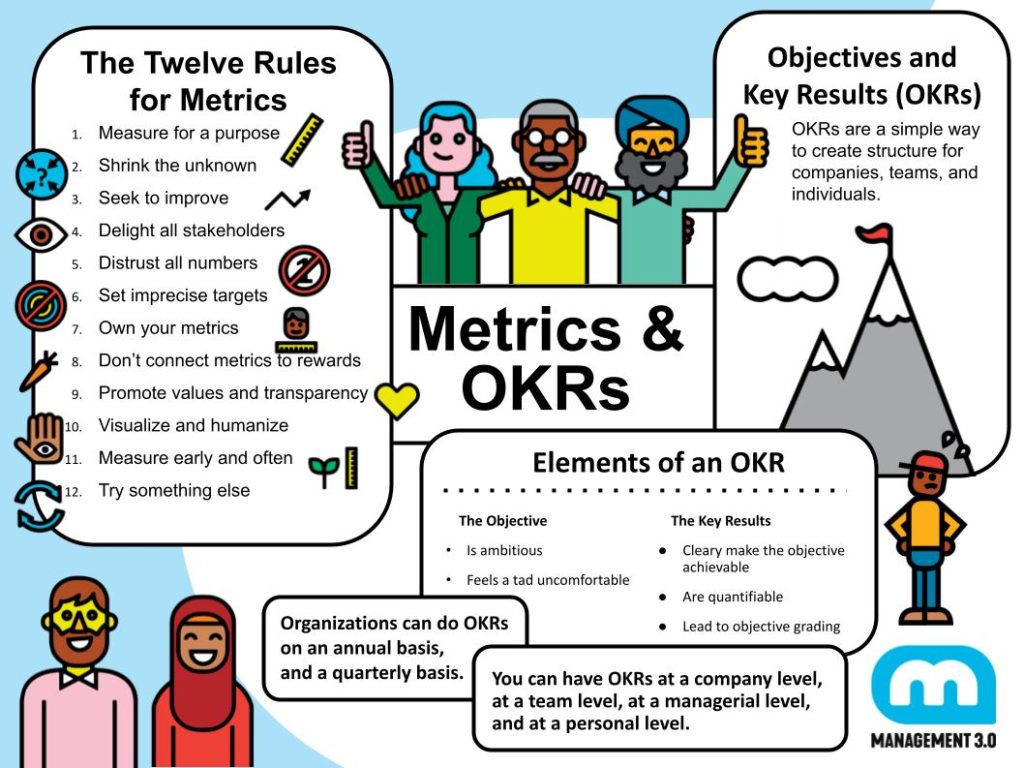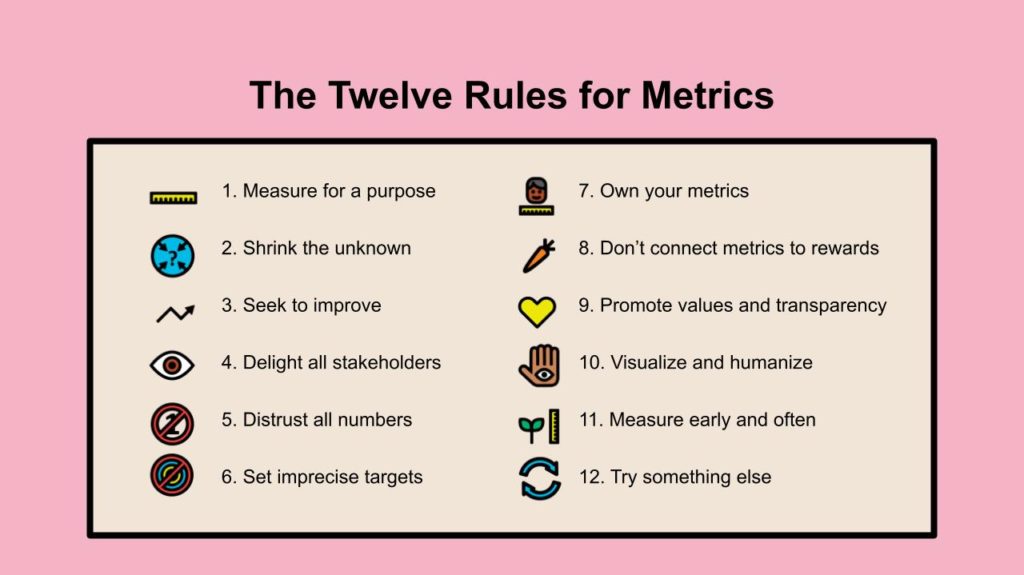How do we measure performance? How do we know we are doing the right things? How do we set aligned goals? This module is all about measurement. It looks into the question of why we have metrics and what we really want to measure and how.
What will you learn?
- The good and bad of having metrics in an organization.
- The 12 rules for good metrics.
- The difference between vanity and actionable metrics.
- How measuring a system will influence a system.
- What are Objectives and Key Results (OKRs) and how to use them.
- How a culture and strong values can minimize the need for metrics.
Vanity Metrics. They might make you feel good, but they don’t offer clear guidance for what to do.
Eric Ries
What will we discuss in this module?
- Why do we have metrics, is this good or bad? And why?
- Who is, or should be, responsible for coming up, and maintaining metrics?
- What are the key metrics in your organization that you would recommend to everyone, and which metrics should be avoided?

The Twelve Rules for Metrics
Hone in on the 12 rules of good metrics if you want to establish a culture where people see measurement as a way to learn, improve and create an organization where all workers participate in the metrics ecosystem.
1. Measure for a purpose
What gets measured gets managed and what gets managed gets done. You must always understand why you are measuring. The metric is not a goal in itself. It’s just a means to an end. It all starts with why.
2. Shrink the unknown
Not everything is measurable. How can you measure the happiness of a person or your employee? What you can do is measure other small indices and proxies which sum up to a better understanding of the bigger picture.
3. Seek to improve
With all the information and numbers out there (big data) it is easy to look busy. Don’t only measure things that will make you look good. Focus on what enables you to do better work.
4. Delight all stakeholders
You work depends on others, and others depend on you. Never optimize for just one stakeholder. Measure your work from multiple perspectives.
5. Distrust all numbers
Observers usually influence their own metrics and they suffer from all kinds of biases. Have a healthy, skeptical attitude towards any reported numbers.
6. Set imprecise targets
If you set targets for others, they will work against the target instead of working towards the original purpose. Make targets vague and more like a direction and use multiple difficult ones, which are impossible to be achieved altogether.
7. Own your metrics
Everyone is responsible for their own work, and metrics help us improve that work. Therefore, everyone should be responsible for their own metrics.
8. Don’t connect metrics to rewards
As people follow the stick to gain a reward they will lose sight of the original objectives and the bigger picture.
9. Promote values and transparency
Shared values and transparency can reduce the desire to game the system. Make numbers, rules, metrics and purposs transparent for everyone,
10. Visualize and humanize
Don’t present only bare numbers people won’t look at. Make it look nice and fun to interact with.
11. Measure early and often
Measure often enough to ensure problems don’t grow too big and risky, and probably more often than you’re doing now.
12. Try something else
Replace your metrics from time to time to uncover other perspectives and different views.




